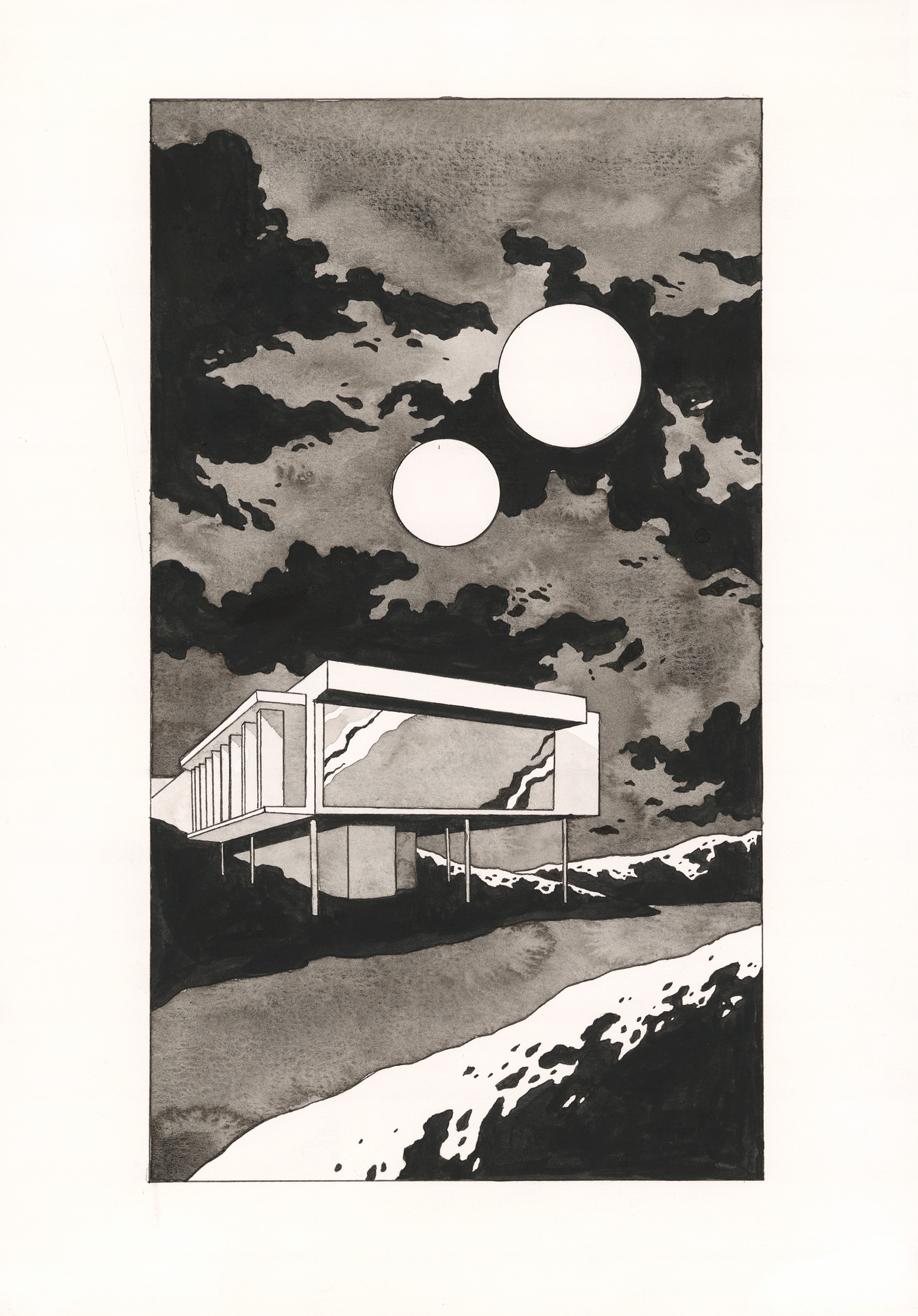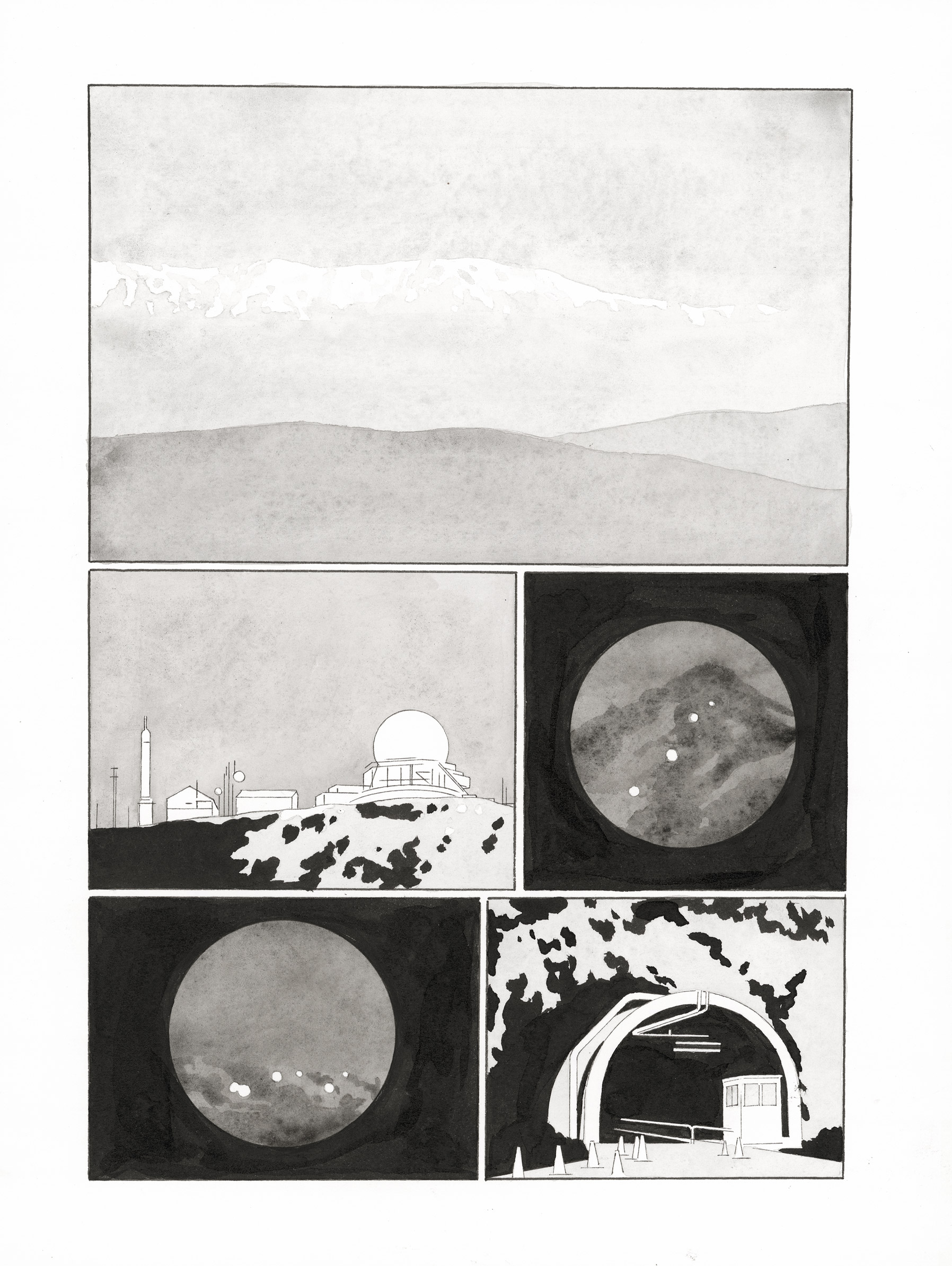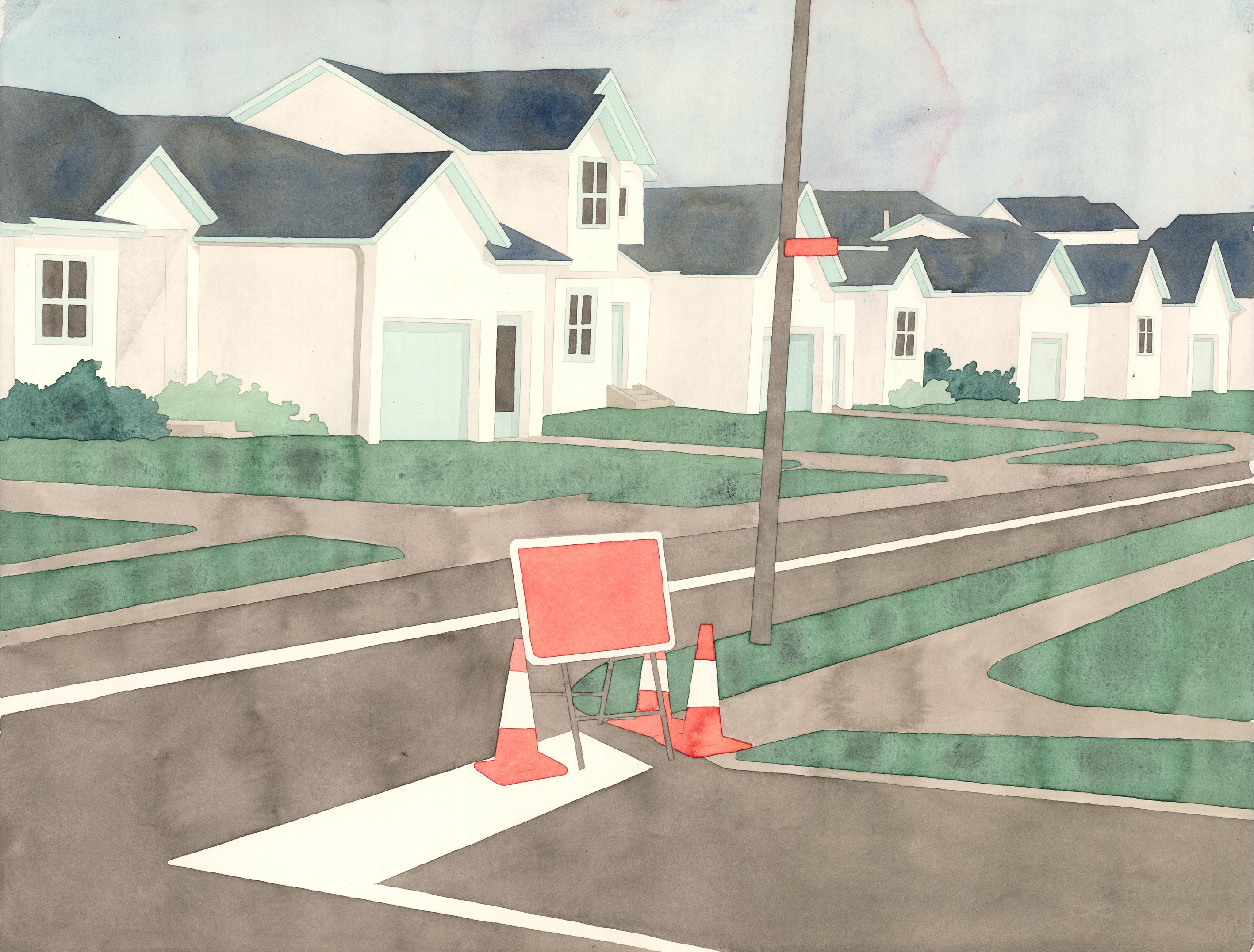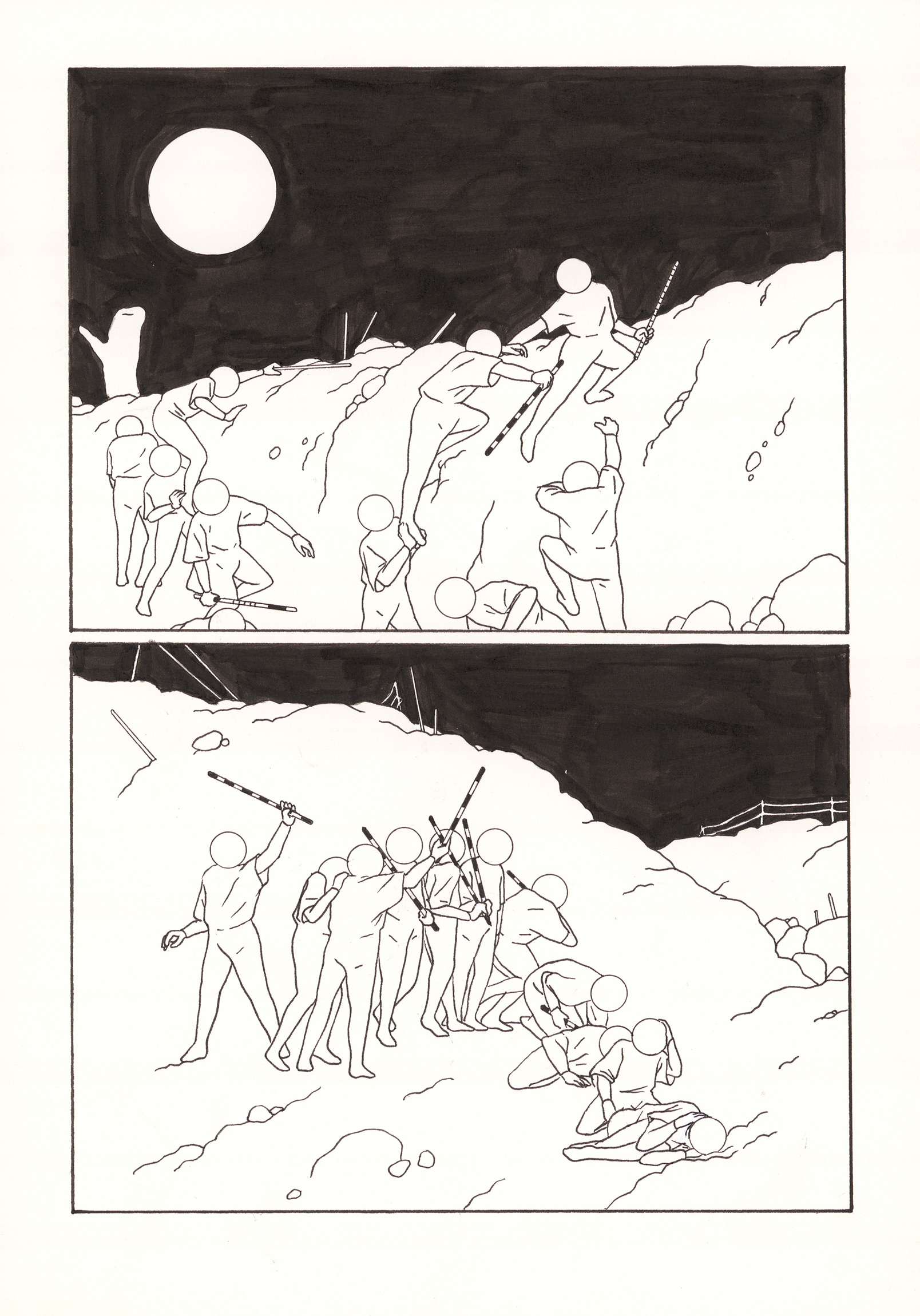Lucas BURTIN Planètes désorientées
Presentation
From 5 to 30 October, the Mycélium programme is showcasing the subtle and enchanting work of Lucas Burtin in an exhibition entitled “Planètes désorientées”, the first to be devoted to the young graphic artist.
Lucas Burtin is highly versatile, a cartoonist, illustrator and author but also a skilful manipulator of the printed image. Whatever the focus – page layout, finishing, printing or publishing – Burtin regards the formal elements of his craft as key. For each of his projects, he gives careful thought to the medium, deciding what form will best suit the content. From unique work of art to reproduction, his input is visible at every stage: from the hand that draws to the machine that prints, from the organic to the mechanical, from the thought process to the object perceived as potential field of exploration. Lucas Burtin focuses on the support, the format, playing with the possibilities offered by the printing process, by the material. Genuine or pseudo-transparencies, choice of technique, support and framing offer him different ways of “structuring” the page.
Exhibiting Lucas Burtin’s work means generating a resonance between single and sequential images, between original works and riso prints. Rather than establishing a hierarchy between plate, illustration and drawing, it means allowing different techniques to coexist and so offer the viewer new visual correspondences that form part of a striking whole.
With its fine, carefully drawn lines, minimalist decors and airy technique, Lucas Burtin’s style is reminiscent of the “ligne claire” movement (whose name was coined by Joost Swarte). The marks he makes in black and white are regular and surgically precise, resulting in an architectural approach to drawing involving controlled straight lines calculated to produce a perfect equilibrium. A landscape, a shape or a posture offer a visual starting point which Burtin models, carves, reworks, deconstructs, like a sculptor at work.
While making his preparatory sketches, Lucas Burtin practises what we might call “non-drawing” as a way of producing this spare graphic writing and an efficient drawing style stripped to essentials. The drawing – a combination of forms and counter-forms, pure white space and areas of solid black – appears to be static, and yet the artist stretches his lines to the point where they vibrate, where they create geometric optical effects. He explores this rigid aesthetic of black/white contrasts by employing changes of scale: from the micro to the macro, the line stretches and expands to breaking point, to the point of exploding.
Burtin switches from controlled realism to abstraction, setting the implacable purity of his drawing, its hard, straight lines, against the unpredictability of the material. The line metamorphoses, distorts, blurs, collides with the moving, floating texture of the wash drawing, the irregular pigmentation of the watercolour. The line drowns in the water and surprising moss-like structures emerge; random arrangements crystallise into apparently recognisable shapes. An unforeseen texture, a spontaneous beauty, replaces any notion of structured aesthetics. The elegant, solid and carefully ordered drawing is thus confronted with freer forms which veil the artist’s compositions in mystery: a statue detaches itself from a vaporous wash drawing, an architecture of glass rises against a backcloth of cotton-wool clouds…
Lucas Burtin plays with the contrast between the things he controls and those that elude him, like an alchemist observing the transition of an element from solid to liquid, as he seeks molecular equilibrium. An equilibrium that he finds by placing his images in counterpoint to one another. As if he were editing a film, he cuts, assembles, gathers his images in panels on a single page, places them opposite each other or sets them apart, playing with the white spaces like so many ellipses in the story being told. He sets his drawings one against the other so that they neither collide nor fuse but pulse with a poetic rhythm that gives rise to a new image, a different story.
In La Plus Belle Plage du Nord, published in 2020 by Fidèle (a publishing house and riso printing studio in Paris), Lucas Burtin has teamed up with Sun Bai to construct a story against the background of a desolate landscape lit by what seems like an other-worldly light. He has chosen a subtle, limited colour palette to convey this intense, chilly Northern light, the light of the “winter sun” (Soleil d’hiver is the name of the desktop publishing business Burtin set up in 2017), giving us a drawing style that has a timeless feel. The text, too, is pared back, at times laconic, and printed in an “old-fashioned” style using simple, upright characters. Lucas Burtin enjoys this aspect of comic strip that offers the artist the chance to work visually through language. The drawing and the text are thus two components set in opposition to one another. The drawn line may be telling us one thing while the text takes us somewhere else, and the sequence equally. Text and drawing may diverge or complement one another. There is a tension between the two: they may engage in a duel or a pas de deux; but either way they serve as a starting point for new narratives. We simply need to take the time to look...
Opening
Thursday 5 October 2023, 6-9pm, in the presence of the artist
Exhibition
From Friday 6 October 2023 to Tuesday 31 October 2023
PARIS | Matignon
Mezzanine
36 avenue Matignon, 75008 Paris
Tuesday > Saturday 11am - 7pm



